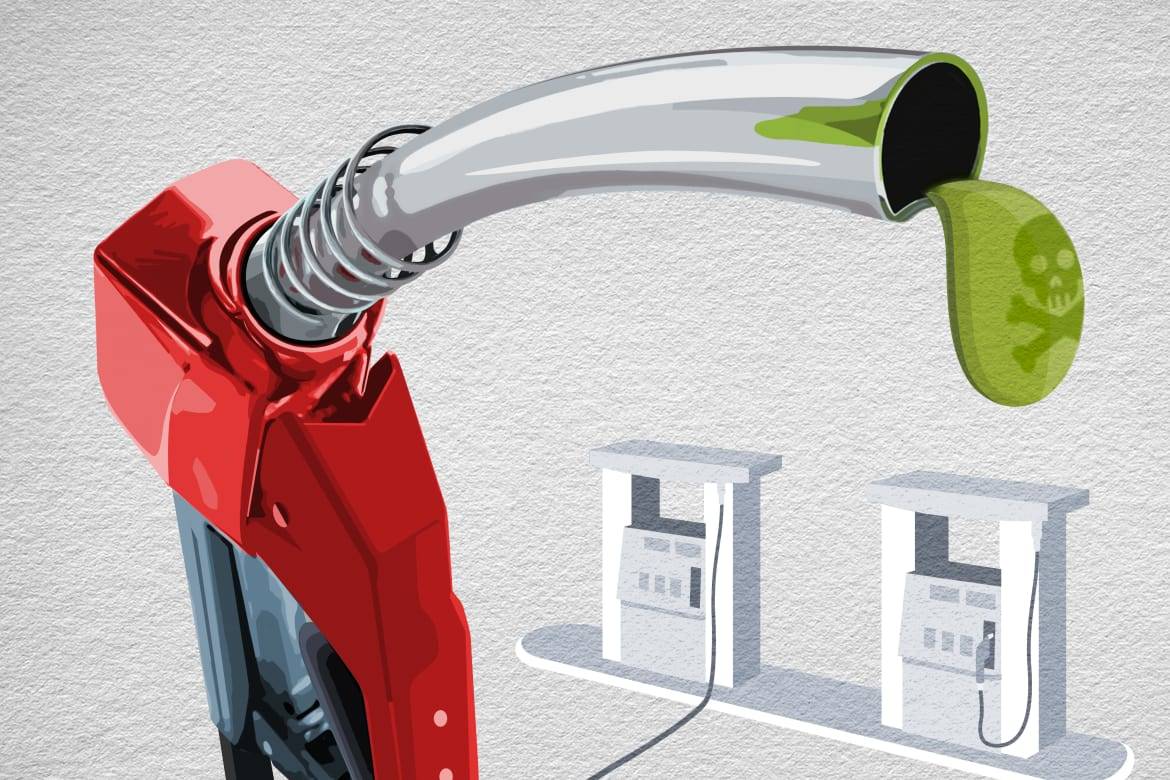Got Bad Gas? Here's What You Should Know


CARS.COM — Are you experiencing sputtering and other uncontrollable noises, perhaps a bit of sluggishness when driving your car? You may have bad gas, and you’re not alone. Contaminated gasoline isn’t common, but it winds up in the tanks of unsuspecting motorists’ vehicles more often than you might think and its effects are damaging.
Related: How to Protect Your Car Against Theft
Signs Your Car Has Bad Gas
According to NACS, the Association for Convenience & Fuel Retailing — an international trade coalition representing thousands of stores and suppliers — the nickname “bad gas” applies to fuel that doesn’t properly combust. Symptoms of bad gas include:
- Difficulty starting up
- Rough idling
- Pinging sounds
- Stalling
- Check engine light illumination
- Reduced fuel economy
- Higher emissions
“Vehicles get their power from a complex combustion process in which ignition depends upon high-quality fuel vapors being delivered to a combustion chamber,” Jeff Lenard, NACS vice president of strategic industry initiatives, said in a statement. “If this process is disrupted, the vapors do not combust properly and the ignition is interrupted, leading to hesitation and suboptimal performance. In extreme cases, it can lead to damage to the vehicle.”
Causes of gas contamination can occur at the refinery, during delivery or at the gas station. High water content caused by delivery or storage issues such as a corroded underground tank or an insufficiently sealed vehicle gas cap are among the culprits. Sediment or other particles not captured by the fuel nozzle at the pump that build up over time on engine parts and clog fuel injectors is another. Lastly, filling up with a lower octane than your vehicle requires or using old gas that has broken down over time also cause problems.
In August 2012, BP recalled 2.1 million gallons of gas with a “higher than normal level of polymeric residue” from its refinery in Whiting, Ind., following hundreds of reports from motorists who experienced car trouble in northwest Indiana, according to a Chicago Tribune story. Dealerships and service shops at the time reported repair bills of as much as $1,200, the Tribune reported. Those who just topped off their tanks were advised to add fuel cleaner and fresh gas, while those who filled up at the pump needed to take their car for fuel flushing. When a small amount of water in the gas is the problem, adding dry gas may be the only repair necessary.
How to Avoid Contaminated Gas
To avoid bad gas where possible, NACS advises using the correct octane for your car, avoiding the use of old gas and always buying from a reputable station.
“While rare, some thieves have used modified trucks to steal fuel from an underground storage tank and resell the fuel at a steep discount,” Lenard said. “However, the fuel has not been stored properly and is much more likely to have significant amounts of water or sediment in it.”
Another racket is when a disreputable gas seller changes the mixture ratios of mid-range gas to create a more profitable blend that’s heavier on the regular and lighter on the premium, according to the Automotive Aftermarket Suppliers Association, a subsidiary of the Motor & Equipment Manufacturers Association that represents more than 1,000 automotive-parts producers.
“But the more common scam is to simply fill the underground ‘premium’ tank with regular, or to dilute it with a few hundred gallons of lower octane fuel,” according to AASA’s website. “It’s a scam that’s hard to detect. Even if the gasoline retailers are being honest, they can be ripped off by distributors delivering lower octane fuel.”
The kind of contaminated gas you likely needn’t worry about, however, is the old sugar-in-the-gas-tank revenge scenario. Aside from the fact that the act itself is basically an “urban legend,” according to Lenard, the notion that sugar caramelizes in your car and acts as cement in the engine to cause irreparable harm is a myth. While it’s certainly not good for your engine and you’ll want to have it cleaned out by a licensed mechanic, sugar does not dissolve in gasoline and fuel filters should prevent it from reaching the engine.
Cars.com’s Editorial department is your source for automotive news and reviews. In line with Cars.com’s long-standing ethics policy, editors and reviewers don’t accept gifts or free trips from automakers. The Editorial department is independent of Cars.com’s advertising, sales and sponsored content departments.

Former Assistant Managing Editor-News Matt Schmitz is a veteran Chicago journalist indulging his curiosity for all things auto while helping to inform car shoppers.
Featured stories

15-Year Car Loans Aren’t a Thing, But Americans Are Getting More Comfortable With Long Loan Terms

2025 Kia Telluride Review: Rougher Roads Ahead



